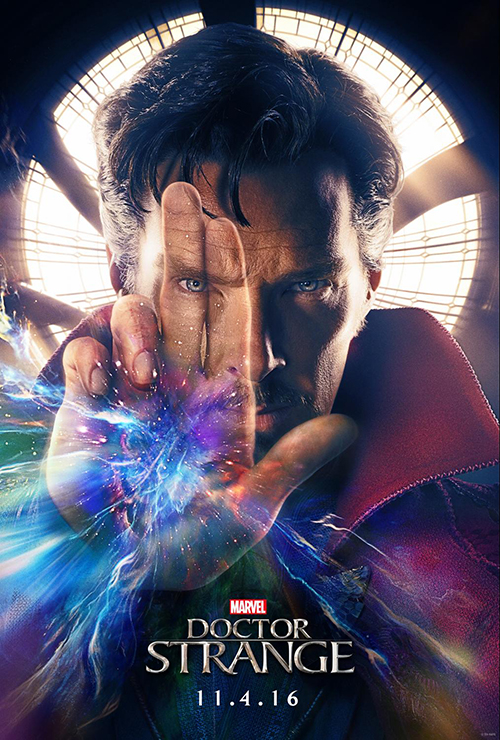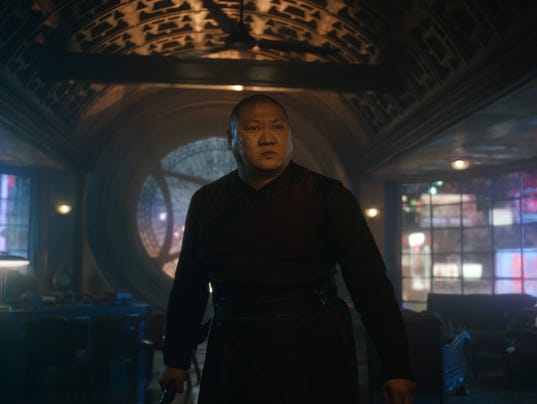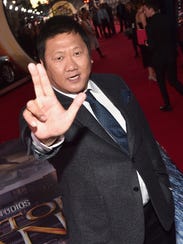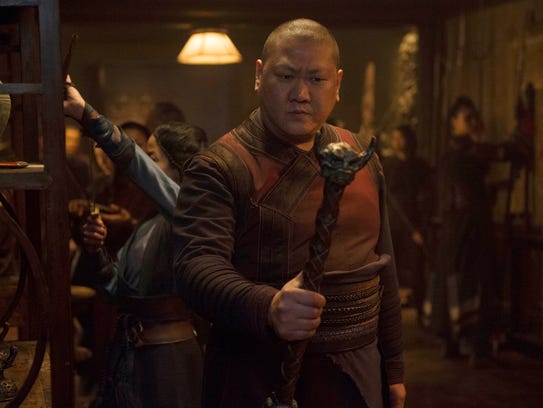#DoctorStrange
The Real Martial Arts of Marvel's Doctor Strange
November 3, 2016 at 07:41AM

Photo by Marvel via YouTube / Screenshot
Posted by Matt Juul @MattJuul
Digital Arts and Entertainment Writer at Boston Magazine
Matt Juul
#Marvel will take a bigger step into the world of magic and multiple dimensions with its latest superhero blockbuster #DoctorStrange, starring Benedict Cumberbatch. While the idea of a spellcasting sorcerer should conjure up images akin to a Gandalf or a Harry Potter, the MCU's newest hero actually has more in common with martial arts icons like Bruce Lee.
Similar to Marvel's upcoming Iron Fist Netflix series, Doctor Strange is heavily influenced by the mystical elements of old school kung fu movies. According to director Scott Derrickson, those types of films made a huge impact on how the fights scenes were choreographed, due to his love of the genre.
"Martial arts is the kind of action that does tie in well to the supernatural," Derrickson recently told Collider. "That is a whole subgenre within martial arts cinema. The supernatural martial arts movie. Particularly within Asian cinema. And I felt like when it came to fighting in the movie that just made sense to certainly to go in that direction and stay away from gunfire and things like that."
He added that the "supernatural action, combat fighting" takes place "within a larger surreal canvas" so that the viewer is "never just watching fighting."
The love for kung fu movies even extends to the film's main antagonist, the conniving Kaecilius played by Mads Mikkelsen. The actor revealed to Polygon that he has always been an avid martials arts and comic book fan, so getting a role in Doctor Strange was a "dream come true."
"Basically, half of my life I was reading comic books, and the other half I was watching Bruce Lee," Mikkelsen said.
While they may be used to create rifts in reality and magical bolts of energy, the actual martial arts skills shown on screen in Doctor Strange are actually rooted in real-life techniques that come from cultures with a lot of training experience.
Set on the outskirts of Kathmandu, Nepal, the film takes place in a region with a long history in martial arts, such as the combat-wrestling style known as malla-yuddha. The 5,000 year old art, which was created in the area now known as Nepal and South Asia, utilizes grappling, punching, and pressure point strikes, in addition to unsavory techniques like joint-breaking and biting.
Although malla-yuddha sounds perfect for the UFC circa 1993, it doesn't really work with the movie's aesthetic. Instead, Doctor Strange drew on kung fu styles that originated in Nepal's northern neighbor of China, before spreading to other areas of Asia and around the world.
Since Kathmandu has become a welcoming place to practitioners of Buddhism, it's no surprise that the fights in the film were influenced by a martial art that developed alongside this belief system.
The Shaolin monks are probably the most well-known kung fu fighters, having fine tuned the art for more than 1,000 years, but modern incarnations of the style didn't really become popular in Nepal until quite recently, thanks to people like this Buddhist nunnery and groups of interested kids.
Any longtime martial arts movie fan can spot the technical motifs of kung fu styles, such as the use of open palm strikes and linear attacks. These movements, although a bit outdated for combat in a cage, work seamlessly with the spellcasting techniques and projections used in Doctor Strange, There's a flair to kung fu moves, and the film expertly uses them to connect the physicality of the characters to their otherworldly skills.
In addition to using hand-to-hand combat as a means of channeling one's inner magic, the Ancient One, played by Tilda Swinton, and her various followers can also imbue their weapons with extraordinary powers.
Many of the fighting tools used in Doctor Strange are your garden variety "ancient weapons," ranging from bo staffs and sticks to spears and blades. These items are pretty much universal among traditional martial arts, including kung fu.
Two weapons featured in the film that you don't see often, though, are the fan and chain whip. Both are used as magically created weapons in training and in battle.
The fan has been a tool of war in many cultures, particularly in Japan, which used several versions of the weapon. The Japanese tessen was a metal folding fan that could be used as a club, while the large open gunbai were used to protect from arrows. A similar weapon known as the tieshan is also in the armory of tai chi practitioners.
The Ancient One is the only sorcerer in Doctor Strange who seems to project fan like weapons when she's on the battlefield. Much like their real life usage, the fans both deflect blows and can inflict damage.
Doctor Strange often uses a mystical version of a chain whip that he creates with his powers. Much like the fan, this weapon is well known to those who study tai chi and other Chinese-based martial arts.
All in all, Doctor Strange taps into the mystical side of martial arts, using old school styles like kung fu to keep the magical elements grounded in the physical world.


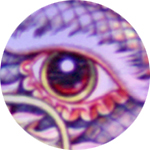




 Reply With Quote
Reply With Quote





